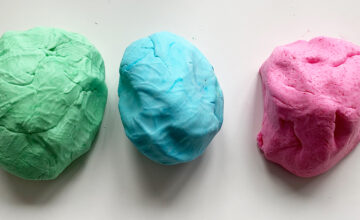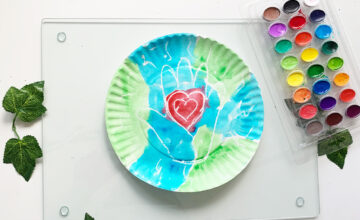
Springtime brings a burst of colors and a perfect opportunity to engage little ones with creative and sensory play. The Pom Pom Easter Sensory Bin is one such idea that combines the colors of Easter with the tactile joy of exploring different textures. Not only is this activity a feast for the senses, but it also offers a playful way to develop fine motor skills, color recognition, and even early math concepts like counting and sorting. Made with easily accessible materials, this sensory bin can be set up in minutes but promises hours of exploratory fun for toddlers and preschoolers.
Creating a Pom Pom Easter Sensory Bin is an easy and affordable way to bring some Easter excitement into your home. The combination of soft pastel pom poms and the surprise of discovering plastic Easter eggs hidden among them can keep little ones engaged and curious. This activity is not just about play; it’s about providing a hands-on learning experience. As children scoop, sort, and pick up pom poms and eggs, they’re not only enjoying themselves but also honing essential developmental skills.
Materials:
- Pastel-colored pom poms
- Egg cartons
- Tongs, scoopers, and tweezers
- Plastic Easter eggs
- Sensory bin

How to Make a Pom Pom Easter Sensory Bin for Toddlers and Preschoolers
- Prepare the Sensory Bin: Begin by filling a shallow sensory bin or container with pastel-colored pom poms. You can choose a mix of sizes for added texture and interest.

- Add the Egg Cartons: Cut the egg cartons into individual cups or groups of two or fours and scatter them throughout the bin. These will serve as little nests or collecting points for the pom poms and eggs.

- Introduce the Tools: Place tongs, scoopers, and tweezers next to the bin. These tools will help little hands practice different grasping techniques and fine motor skills.

- Hide the Plastic Easter Eggs: Tuck the plastic Easter eggs among the pom poms. You can fill them with small surprises or leave them empty for a simple find-and-discover game.
How they Played
Watching little ones explore the Pom Pom Easter Sensory Bin was a great experience. Initially drawn to the vibrant colors, they dove in with both hands, feeling the soft pom poms. Their curiosity piqued when they found the first plastic egg. Using the tongs with concentration, they tried to pick up the eggs and pom poms, occasionally switching to scoopers for a different challenge. The egg cartons quickly became treasure troves, as they filled them with their finds, counting each item with excitement. It was a joy to see them so engaged, learning through play without even realizing it.

Tips for Success:
- Supervise closely to ensure the small items are used safely, especially if your child is prone to putting things in their mouth.
- Encourage clean-up as part of the activity to develop responsibility and care for materials.
- Vary the items in the bin occasionally to keep interest high and introduce new challenges.

Skills Learned with the Pom Pom Sensory Bin:
- Fine Motor Skills: Using tools and handling small objects strengthen the muscles in the hands and fingers, crucial for writing and other daily tasks.
- Sensory Processing: Exploring the different textures and colors stimulates the senses, which is essential for cognitive development.
- Problem-Solving: Figuring out how to use the tools effectively and how to retrieve the eggs fosters critical thinking and perseverance.
- Math Skills: Sorting, counting, and organizing the pom poms and eggs introduce basic math concepts in a fun and accessible way.
The Pom Pom Easter Sensory Bin is more than just a playful activity; it’s a colorful, sensory-rich experience that fosters learning and development. It’s a testament to the power of simple materials to create meaningful and educational play opportunities. So, this Easter, why not create a sensory bin that will not only entertain your toddler but also support their growth and development?
Play2Learn Toddler & Preschool Programs for Curious Toddlers
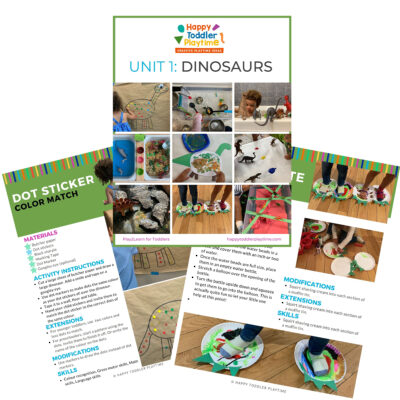
There is no limit to your toddler’s energy and curiosity. That energy and curiosity although a joy can be challenging at times. Their interest in just about everything around them is what makes them great learners. One and two year olds can soak up so much just from their senses!
But as a teacher or parent that thirst for learning can be exhausting. That is why I created this toddler and preschooler program. To help you get the most out of this time with your curious toddler without having to come up with creative ways to play and interact with them.
Play2Learn for Toddlers includes 20 Units for toddlers. Each 2-week toddler unit has 20 super easy to set up and engaging activities for toddlers 18 months to 3 years.
Play2Learn Preschool which includes 20 Units for preschoolers. Each 2-week preschoolers unit has 20 unique and easy to set up and engaging activities for preschoolers 3 years to 5 years. That’s over 800 learning activities for your toddler and preschooler at your fingertips! So many ideas you and your child will never be bored again!
These toddler and preschool lesson plans and activities will definitely keep you and your toddler and preschooler busy playing and learning!
Click here for more information: Play2Learn
Book: Exciting Sensory Bins for Curious Kids

Did you know I wrote a book of sensory bins? Click here for more information Exciting Sensory Bin for Curious Kids. Or grab your copy at Amazon.
Boring afternoons are made exciting with awesome animal-based bins, like Salty Shark Bay or Yarn Farm. Pretend play bins like Birthday Cake Sensory Play or Bubble Tea Party encourage creativity and imagination. And your kids will have so much fun they won’t even know they’re getting smarter with STEAM (science, technology, engineering, art and math) activities like Sink or Float Soup, Magnetic Letter Hunt or Ice Cream Scoop and Count.
Designed for toddlers 18 months and up.
Book: Super STEAM Activity Book for Kids
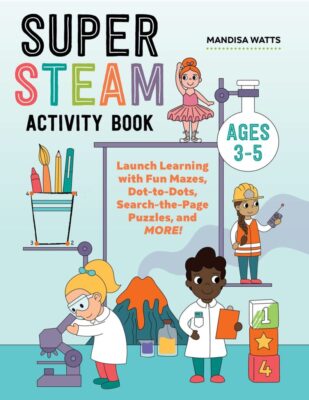
Learning all about science, technology, engineering, art, and math sets kids up for scholastic success―and it can be so much fun! Watch kids enjoy building STEAM skills as they color friendly fish, help water find its way to tree roots, solve math problems with mazes, and more.
Find out more and grab your copy here.
Designed for preschoolers 3 years old and up.
Book: Big Book of Riddles for Kids
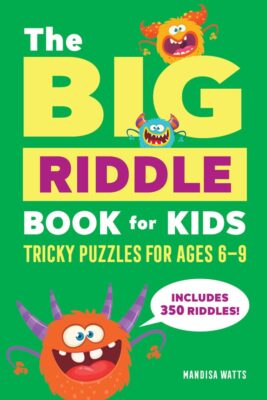
Riddle me this: What’s an exciting way to practice critical thinking while having a blast? The Big Riddle Book for Kids, of course! From hilarious puns to tough brain teasers, kids can build problem-solving skills with hundreds of riddles tha. t show them how to think outside the box.
- 350 riddles for kids—Have hours of fun with riddles, puns and jokes, and math and logic puzzles that’ll get their wheels turning!
- Level up their skills—Riddles get trickier as kids progress through the book, challenging them as they get better at solving puzzles!
- Double-check their work—Kids can check their answers in the back of the book with a handy answer key.
Help children expand their minds while having fun with this puzzle book for kids!
Designed for kids ages 6 years old and up.
TV Show: Curious Crafting
I’m so excited to share my crafting TV show Curious Crafting which launched in July 2022 on TVOkids and TVOkids YouTube! Season 2 aired in August 2023! My show was also nominated in 2023 for Best Live Action Preschool Series by the Youth Media Alliance Awards of Excellence.
Curious Crafting Season 1 is also now airing in Australia on ABC! Watch it here!
Set in the ultimate crafting space, Curious Crafting is a short form pre-school age series about the joy of making crafts. I lead a rotating cast of adorable little preschoolers (including my own) making magic out of common household objects.
In each episode we transform recycled items into magical crafts like a milk carton school bus, paper bag puppet or cotton pad turtle. The crafters learn and laugh their way through each activity while demonstrating what their young imaginations can create.
Curious Crafting shares the adventure and joy of making art with takeaway lessons for creating crafts at home.
This show designed for toddlers and preschoolers 2.5 years old and up.

Pom Pom Easter Sensory Bin
Materials
- Pastel-colored pom poms
- Egg cartons
- Tongs, scoopers, and tweezers
- Plastic Easter eggs
- Sensory bin
Instructions
- Prepare the Sensory Bin: Begin by filling a shallow sensory bin or container with pastel-colored pom poms. You can choose a mix of sizes for added texture and interest.
- Add the Egg Cartons: Cut the egg cartons into individual cups or groups of two or fours and scatter them throughout the bin. These will serve as little nests or collecting points for the pom poms and eggs.
- Introduce the Tools: Place tongs, scoopers, and tweezers next to the bin. These tools will help little hands practice different grasping techniques and fine motor skills.
- Hide the Plastic Easter Eggs: Tuck the plastic Easter eggs among the pom poms. You can fill them with small surprises or leave them empty for a simple find-and-discover game.


